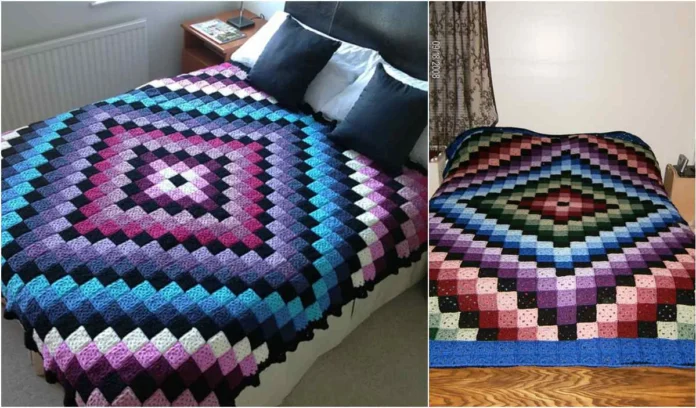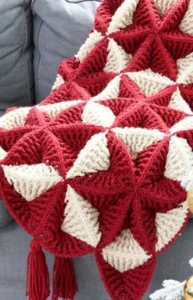
Crochet: 3D Prize Winning is more than just a craft—it’s an art form that pushes the boundaries of traditional crocheting techniques. Combining texture, dimension, and creativity, this approach has led crafters around the world to win awards and recognition in various fiber arts competitions. With stunning visual impact and intricate design, 3D crochet projects offer endless possibilities for those looking to create something truly unique.
If you’re passionate about crocheting and eager to explore a new level of expression, 3D Prize Winning Crochet is your next creative challenge. From lifelike animals to blooming floral motifs and sculptural home décor, the use of depth and form gives a whole new life to yarn and hook work. These projects not only look impressive but also allow artists to tell stories through their stitches.
This article will guide you through the essentials of Crochet: 3D Prize Winning techniques, materials, design ideas, and showcase-worthy patterns. Whether you’re a beginner aiming high or an expert looking to refine your style, this SEO-optimized guide will provide you with actionable insights, creative inspiration, and a fresh take on the world of CROCHE.

3D crochet stands out due to its ability to bring flat patterns into lifelike, tactile art. Unlike traditional patterns, these designs require more planning, structural support, and creative stitch combinations. The result is a piece that feels alive and full of character.
Using techniques like puff stitches, bobbles, and layers, crocheters can build projects that rise off the surface. This adds dramatic effect, especially for pieces displayed in exhibitions or entered into competitions.
Patterns often mimic real-world objects such as flowers, animals, fruits, and even miniature scenes. The goal is to replicate texture and depth realistically using only yarn and a hook.
Creating 3D designs requires understanding shape formation. Increasing and decreasing stitches, working in rounds, and stuffing parts are all crucial techniques to master.
The colors used in 3D projects also play a significant role. Shading and highlights created through yarn choices can enhance the dimensional look and make your creation more lifelike.
What makes these works prize-winning is not just skill but originality. Judges at craft fairs and art shows look for innovation, execution, and overall visual impact.
THE BEST CROCHET BLANKET PATTERN
To start your journey with Crochet: 3D Prize Winning, choosing the right tools is essential. While basic supplies like hooks and yarn are a given, specific accessories can elevate your 3D projects.
A variety of hook sizes allows you to control tension and density. For tight, sculpted forms, a smaller hook is often better—even when working with worsted yarns.
Stitch markers are invaluable when working in continuous rounds or when shaping intricate parts of your project. They help keep track of rows and prevent unraveling errors.
Polyester stuffing is commonly used to give volume to certain parts of 3D creations, like amigurumi figures or flower petals. For stiffer parts, pipe cleaners or wire may be inserted.
Choose high-quality yarns that retain shape and structure. Cotton and acrylic blends tend to hold 3D forms better than softer or stretchier options.
Blocking mats and pins are useful when shaping flat base pieces or when assembling layered 3D patterns. They help give your creation a polished, professional finish.
Incorporating embellishments like safety eyes, embroidery thread, or beads can enhance your project’s visual appeal and push it into prize-winning territory.
The key to a successful Crochet: 3D Prize Winning design lies in thoughtful planning and bold creativity. Before picking up your hook, visualize your end product and break it into smaller components.
Start with sketching. Whether it’s a realistic flower bouquet or a whimsical fairy house, a clear plan allows you to determine shape, size, and structure.
Decide on your stitch techniques early. For example, use popcorn and bobble stitches to mimic natural textures like leaves or fur. These details bring depth and realism.
Consider balance and symmetry. Judges often look for well-composed pieces that look harmonious from all angles. Rotating your work frequently can help check proportions.
Color selection is also critical. Layered shading through yarn gradients can simulate depth and lighting, enhancing the overall 3D effect.
Experimentation is encouraged. Mix different techniques and materials—try incorporating embroidery or even felting to make certain features pop.
Most importantly, make sure your piece tells a story or evokes emotion. Whether it’s a joyful bunny or a serene nature scene, 3D crochet that resonates with viewers often takes home the prize.
Creating a stunning piece is only part of the Crochet: 3D Prize Winning journey. Knowing how to showcase your work is equally important for gaining recognition.
Photography matters. Use good lighting and clear backgrounds to highlight texture and detail. Multiple angles can showcase the dimension of your creation.
Mount your piece well if submitting it to an exhibition. A secure, attractive presentation elevates your work and shows professionalism.
Enter local fairs, online contests, and fiber art shows. Many have special categories for crochet or 3D fiber art. Read the rules carefully and tailor your work to fit criteria.
Join crocheting communities on social media or forums. These platforms often host themed challenges where you can gain feedback and recognition.
Keep documentation of your process. Some contests appreciate seeing the journey behind your design. Sharing progress photos and sketches can boost your credibility.
If you’re submitting your work for publication or blogs, include a detailed description and materials list. This transparency helps build trust and showcases your expertise as a CROCHE artist.
What is 3D crochet?
3D crochet involves creating designs that have dimension and depth, such as plush toys, flowers, or sculptural pieces. Unlike flat patterns, 3D crochet stands out from the surface and often involves stuffing and layering techniques.
Is 3D crochet suitable for beginners?
While it can be challenging, many 3D crochet projects have beginner-friendly patterns. Start with simple shapes like flowers or spheres and gradually work your way to more complex designs.
What type of yarn is best for 3D crochet?
Cotton and acrylic yarns are often preferred due to their firmness and structure. They help maintain the shape of the design better than softer yarns like alpaca or silk.
How can I enter a crochet competition?
Check with local fairs, online platforms, and fiber art communities for contest announcements. Each will have its own rules, themes, and judging criteria, so read them carefully before submitting your piece.
How do I keep my 3D crochet piece from collapsing?
Proper stuffing, tight stitches, and sometimes using internal support like wire or foam shapes can help your project stay firm and maintain its structure.
Can I sell my 3D prize-winning crochet pieces?
Yes! Many artists sell their pieces online or at craft fairs. Just ensure that you own the design or have permission if using a pattern. Unique, high-quality 3D crochet can command premium prices
In this article, we’ve explored the fascinating world of Crochet: 3D Prize Winning, from its unique techniques to the tools, materials, and design strategies that make a project truly award-worthy. You’ve learned how to plan, create, and showcase dimensional crochet that not only impresses but inspires. Whether you’re looking to enter a competition or simply challenge yourself creatively, 3D crochet offers endless artistic possibilities.
If you enjoyed this guide or found it helpful, please leave a sincere opinion or share your suggestions in the comments. Your feedback helps us improve and bring even more creative crochet content your way!